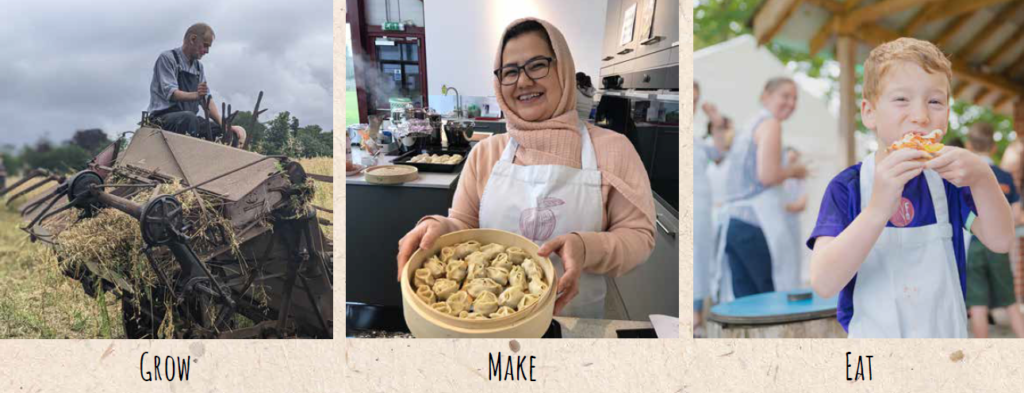Vision
We have made significant progress towards unlocking the museum’s considerable potential. The museum became the Food Museum in 2022, after delivering improvements to the visitor experience and condition of the historic estate. Our Vision document (below) summarises what we have achieved and sets out our exciting plans for development, covering the period 2023-2030.
We aim to be East Anglia’s premier visitor attraction, delivering joyful, thought-provoking, lifelong learning to improve public understanding of food: a critical and universal topic.
Read our Vision & Development Plan, 2023-2030
…the museum is a living place that makes real what’s driven my work for more than 30 years: food matters. How we grow, produce, buy, cook and consume food is crucial to the future of human life. Unless we can grasp that — feel it — and understand that 6 inches of soil is all we’ve got between us and extinction, well, it’s not looking good.
Sheila Dillon, broadcaster and patron of the Food Museum
Executive Summary
Food resilience and security will be of paramount importance in the years ahead. We all look forward to seeing these great plans come to fruition.
Clare, Countess of Euston, H.M. Lord Lieutenant of Suffolk and patron of the Food Museum
Infrastructure
Our priority for 2023-25 is completion of an infrastructure project which will improve historic buildings and visitor facilities, including new accessible toilets, upgrades to our collections store and estate workshop, and a stunning new bridge providing access to the Grade II Fishing Lodge for the first time
Themed public programme
From 2023-2030, the museum will deliver a high-quality, changing public programme of exhibitions and activities to strategically engage and grow our audiences. Varied future themes include school dinners, food writing, farming, Britain’s imperial past, and wartime food. The programmes will be delivered in partnership with universities, businesses, organisations and communities.
Development of the visitor experience
A new permanent visitor experience will be created by refurbishing the Robert Boby Building to display historic kitchens and food manufacturing equipment. Other plans include relocating and refurbishing a medieval farmhouse, adding a play area and restoring military huts for residential volunteering.
A new entrance area
Redevelopment of the entrance will improve the experience of arrival and create opportunities for income generation and enterprise. A courtyard events space, larger shop and café, workshops for start-ups, and a free public area will make the museum an exciting town centre destination.
Increased profile
The museum will grow its profile through increased digital activity and hosting conferences and events in partnership with academia and business and taking the museum experience on the road.
Overarching priorities
Environmental responsibility and inclusion run through all of our work.
Environment: We have been recognised as an industry leader in environmental responsibility through a Museums + Heritage Sustainability award in 2023 for our Hedgerow project. Our priorities include managing the landscape for biodiversity, improving energy efficiency, rationalising infrastructure, and – in particular – engaging visitors on sustainability issues.
Inclusion: The museum will expand its collection strategically to support diverse narratives. Consultation and feasibility studies have shaped our plans for development. We empower people to be actively involved in telling the stories of their communities in the museum. We work with a wide range of people to programme exhibitions and activities. This includes a community gallery in which we co-curate displays with groups and individuals.



